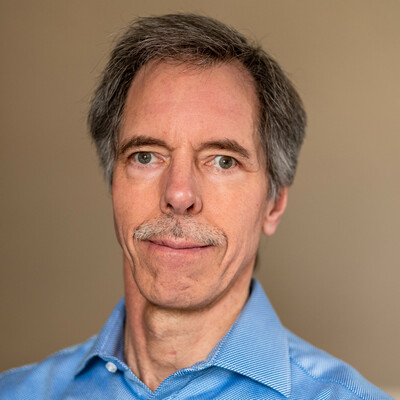Dr. Jon Nels Peterson joined the NTT Research Medical & Health Informatics (MEI) Lab in November 2020. A biomedical engineer with both academic and medical device industry experience, Dr. Peterson will provide technical expertise and leadership in advancing the bio digital twin development strategy. Most recently, he was principal clinical systems engineer at Micro Systems Engineering, Inc., where he was the lead systems engineer for a family of implantable cardiac monitors. He previously held research and engineering positions at Boston Scientific CRM and Creare, Inc., and was a research assistant professor at the University of Vermont College of Medicine. He holds a Ph.D. in Biomedical Engineering from the Johns Hopkins University School of Medicine and a B.S. in Electrical Engineering from Cornell University. We recently checked in with Dr. Peterson to learn more about his background and new position at NTT Research.
What led you from electrical engineering to biomedical engineering in graduate school and then to specialize in cardiovascular systems? Was it the electro-physiological nature of the heart?
My mother was a dietician, and my older sister was a nurse. As an undergrad, I had a vague notion that I wanted to do something related to health, but I wasn’t quite sure what. My epiphany came when some guy gave a talk at Cornell on using engineering principles to understand physiology. I was blown away. That “guy” was Dr. Kiichi Sagawa, at Johns Hopkins. I ended up in his lab.
Your early academic research appears to have involved healthy and diseased cardiac muscle, and muscle contraction and relaxation. Looking back, which findings from that time and/or systems or models that you developed became most relevant to your subsequent work?
Two things really stuck with me from that period. The first is a mindset: don’t be constrained by what you’re good at! Mechanics was never my strong suit in physics class, yet much of my graduate and post-doc work was strongly influenced by mechanics. The second is the value of models, whether simple or sophisticated. They serve as a framework to understand complex systems, and to generate hypotheses for deeper understanding of how things work, in health and disease.
Oh, and one more thing: don’t be afraid to work on unpopular topics. I like to say that I ‘did’ relaxation in grad school before most people cared about relaxation. These days, diastolic heart failure, in which relaxation is impaired, is recognized as a significant health problem.
Was it a smooth transition for you, going from academic to industry research? Do you see your work as more that of an engineer or a scientist – or both?
When I left academia, I worked at a consulting company because it felt like a halfway point between academia and industry. This made for a very smooth transition, while also providing another perspective. And speaking of perspective, I like to think that I am both a scientist who seeks to understand the world, and an engineer who applies that knowledge.
Your experience at Creare Inc., Boston Scientific and Micro Systems Engineering all seem quite relevant to the MEI Lab’s cardiovascular-oriented bio digital twin initiative. Is that project one of the reasons you joined NTT Research? Any other factors?
The bio digital twin initiative is certainly a major factor, as it allows me to draw on and build from my prior experiences. Another attraction is the environment of a research institute, which tends to take a longer-term view rather than being focused on a specific product.
What from your research and professional experience do you think you’ll be drawing upon most as you go forward? What are you hoping to accomplish as part of the MEI Lab?
I have been privileged to work on problems in basic physiology and clinical medicine, signal processing and data analysis, remote sensing and implantable device design, modeling and simulation. I expect to use all of that, and more! My hope is that with the bio digital twin, we can make a real difference in clinical medicine and, most important, in people’s lives.


